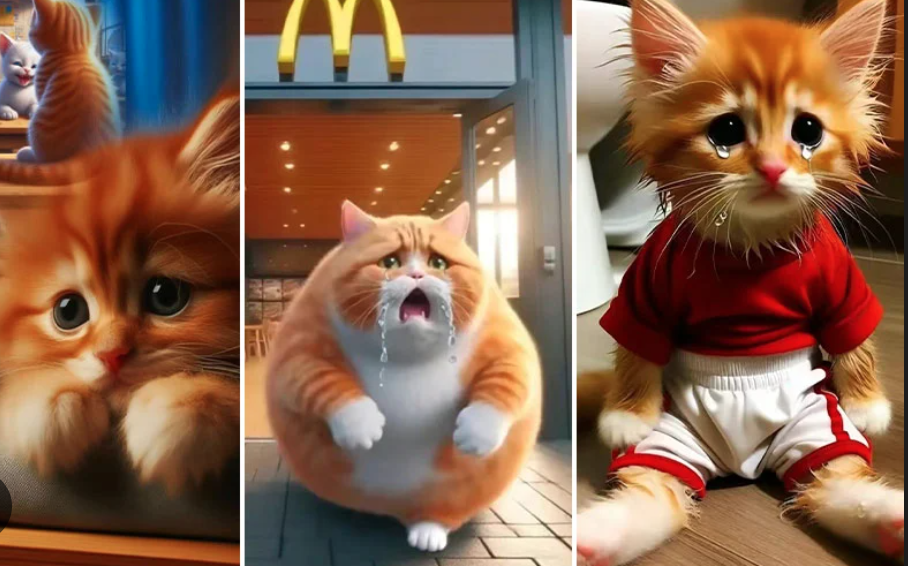
There have been many famous internet cats, but perhaps none have touched hearts as deeply as Chubby. Though his appearance varies, Chubby is always a rotund, ginger, AI-generated feline often found in sorrowful or strange situations. He has confused, outraged, and charmed millions.
On platforms like TikTok and YouTube Shorts, content creators craft wordless slideshows that tell stories about Chubby and his family using AI-generated images. One popular video by @mpminds opens with Chubby and his child, Chubby Jr., dressed in rags. Chubby holds a cardboard sign that reads “Will Purr Fro Eood” (AI tools struggle with text). The images then depict Chubby shoplifting, being arrested, and leaving Chubby Jr. to an uncertain future. The final image shows Chubby in jail, wistfully dreaming of his son. This video has amassed over 50 million views and 68,000 comments in multiple languages.
Chubby is not alone in this trend. Similar content has surged across social media. In March, bizarre AI-generated images of Jesus made out of shrimp went viral on Facebook, leaving viewers baffled. Speculation arose that networks of bots were boosting these posts. However, with this new genre of cat videos, it’s clear that real people are emotionally invested in these AI-generated felines, prompting questions about the intersection of art and technology, and potentially offering a glimpse into the future of the internet.
The rise of AI-generated cat content can be attributed to a blend of technical, economic, and cultural forces. Most videos place these cats in depressing human-like scenarios: Chubby Jr. faces schoolyard bullying, Chubby battles a cigarette addiction, and the cats get drafted into the war. Many of these videos are soundtracked by AI-generated covers of Billie Eilish’s “What Was I Made For,” with meows replacing the lyrics. Previously, an AI cover of Sia’s “Unstoppable,” also meowed, was the go-to soundtrack.
Comments on these videos reflect the emotional impact they have on viewers.
